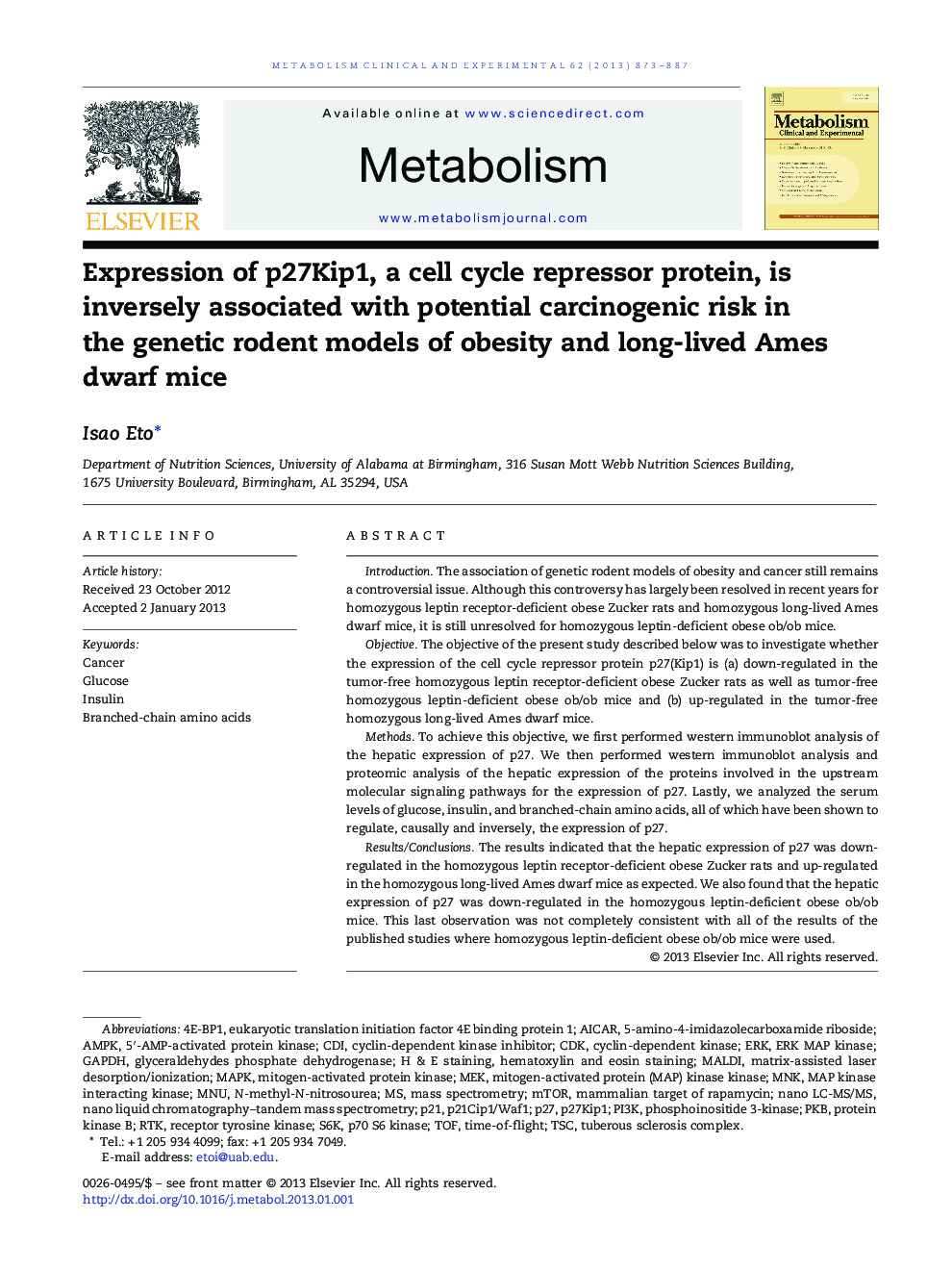| Article ID | Journal | Published Year | Pages | File Type |
|---|---|---|---|---|
| 2805532 | Metabolism | 2013 | 15 Pages |
IntroductionThe association of genetic rodent models of obesity and cancer still remains a controversial issue. Although this controversy has largely been resolved in recent years for homozygous leptin receptor-deficient obese Zucker rats and homozygous long-lived Ames dwarf mice, it is still unresolved for homozygous leptin-deficient obese ob/ob mice.ObjectiveThe objective of the present study described below was to investigate whether the expression of the cell cycle repressor protein p27(Kip1) is (a) down-regulated in the tumor-free homozygous leptin receptor-deficient obese Zucker rats as well as tumor-free homozygous leptin-deficient obese ob/ob mice and (b) up-regulated in the tumor-free homozygous long-lived Ames dwarf mice.MethodsTo achieve this objective, we first performed western immunoblot analysis of the hepatic expression of p27. We then performed western immunoblot analysis and proteomic analysis of the hepatic expression of the proteins involved in the upstream molecular signaling pathways for the expression of p27. Lastly, we analyzed the serum levels of glucose, insulin, and branched-chain amino acids, all of which have been shown to regulate, causally and inversely, the expression of p27.Results/ConclusionsThe results indicated that the hepatic expression of p27 was down-regulated in the homozygous leptin receptor-deficient obese Zucker rats and up-regulated in the homozygous long-lived Ames dwarf mice as expected. We also found that the hepatic expression of p27 was down-regulated in the homozygous leptin-deficient obese ob/ob mice. This last observation was not completely consistent with all of the results of the published studies where homozygous leptin-deficient obese ob/ob mice were used.
